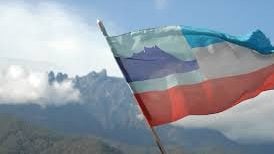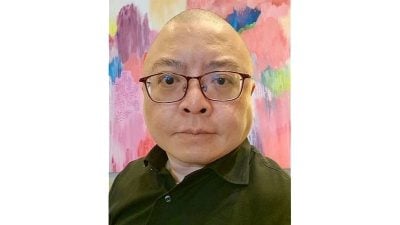
As 2024 reaches its midpoint, a bustling tourist season is unfolding worldwide, with many countries easing entry policies to attract more international visitors.
Amid this global trend, a promising development is the proposed implementation of a common visa for the Association of Southeast Asian Nations (ASEAN) countries.
This initiative has generated considerable discussion, especially regarding its potential impact on Vietnam.
The benefits of such an agreement could be substantial, influencing Vietnam’s economy, tourism industry, and diplomatic relationships not only within ASEAN but also with countries beyond the region.
The Southeast Asia Common Visa is a common visa initiative currently being proposed by Thailand that at present involves six ASEAN countries: Cambodia, Malaysia, Myanmar, Laos, Thailand, and Vietnam. It aims to streamline visa regulations and create a single visa for these countries.
This initiative is part of the broader trend of cooperation and integration within ASEAN, as outlined in the ASEAN Future Forum that took place in Hanoi last April.
In its essence, the proposed common visa would allow a foreign national to visit all six countries with a single visa, allowing for mobility within these countries for the duration of the visa.
Since 1996, ASEAN countries have been collaborating on immigration and consular matters, formalised by the ASEAN Plan of Action for Cooperation on Immigration Matters in 2000.
Significant achievements include the ASEAN Framework Agreement on Visa Exemption adopted in 2016, which allows citizens of ASEAN Member States holding valid national passports to stay visa-free within ASEAN countries for up to 14 days.
Additionally, the ASEAN Lane, implemented at major international airports since 2010, expedites immigration processing for ASEAN nationals to enhance travel and tourism.
However, only Thailand and Malaysia have consistently maintained these expedited lanes.
One of the key advantages for Vietnam from the implementation of this common visa is the potential boost to tourism.
Vietnam has made a remarkable recovery in international tourist arrivals post-COVID-19 and is well on track to surpass its record 2019 year of 18 million tourists this year, with more than 12 million tourists visiting in the first six months of 2024.
The ASEAN common visa agreement is expected to increase the number of international inbound tourists, especially from high-income, desirable long-haul markets such as Europe and North America, who may choose to visit Vietnam as part of their Southeast Asia travel plans.
This would lead to an increase in tourist receipts, benefiting the economy and the country’s balance of payments.
Additionally, the common visa could create more employment opportunities and attract more foreign direct investment (FDI), contributing to the dynamism of Vietnam’s tourism sector and overall economy.
The proposal spearheaded by Thailand has received overwhelming support from various stakeholders, including the government, businesses, tour operators, and academics.
The World Economic Forum (WEF) has been expressing its support for an ASEAN visa since 2016, highlighting the potential for further integration and increased overall power of ASEAN within the tourism global market.
ASEAN countries included in this common visa initiative such as Vietnam have much to gain from joint promotional efforts, for example, as well as the facilitation of easier travel for tourists across member states.
This would not only boost tourism numbers but also enhance cultural exchange and economic collaboration within the region.
By simplifying visa procedures, ASEAN can attract more international visitors, thereby driving economic growth and fostering a stronger sense of regional unity.
A study conducted by the United Nations World Tourism Organisation (UNWTO) estimated that visa facilitation could lead to a significant increase in international tourist arrivals to ASEAN, as well as tourism receipts and job creation.
This study predicted an increase between 3 and 5.1% in international visa arrivals; tourism receipts would increase between 2.8 and 4.7%, and jobs would increase between 1.6 and 3.1%.
Among ASEAN countries, data shows a strong correlation between the number of visa exemptions and international visitor arrivals.
Malaysia and Indonesia, with the highest visa exemptions (169 countries each), attracted a significant number of visitors, 28.96 million and 11.68 million, respectively.
Singapore, with 166 visa exemptions, welcomed 13.61 million visitors, further underscoring this trend.
Countries with fewer visa exemptions like Brunei (56 exemptions, 2.27 million visitors) and Cambodia (11 exemptions, 5.45 million visitors) generally saw lower visitor numbers.
An exception is Thailand, which, despite having only 57 visa exemptions, attracted 28.15 million visitors, indicating that factors beyond visa policies, such as tourism infrastructure and destination appeal, also play crucial roles in attracting tourists.
Starting July 15 of this year, Thailand began granting visa waivers to an additional 36 countries, bringing its total of visa waivers to 93.
Given this trend, Vietnam, which currently offers visa exemptions to 27 countries and attracted 12.60 million visitors in 2023, could see a substantial boost in tourism by increasing the number of its visa waivers, namely by expanding its waiver to all countries in the European Union and to long haul markets in Europe and North America.
Participation in a common ASEAN visa scheme would be a powerful step in that direction.
While the implementation of a common visa in Vietnam holds promising benefits, it also presents several challenges that need to be addressed.
These challenges include revising administrative aspects of bilateral agreements, ensuring fair distribution of visa fees among member countries, harmonising security and technology standards, and developing necessary infrastructure.
Additionally, efforts must be made to promote lesser-known destinations, manage the influx of migrant workers and technical experts, and tackle issues related to “begpackers.”
To adequately prepare for and capitalise on the opportunities presented by the implementation of the common visa, Vietnam needs to take several steps.
These include establishing bilateral agreements and agreements between ASEAN countries and other nations, defining legislative frameworks, addressing joint security and surveillance concerns, and ensuring compatibility of visa policies among participating countries.
Vietnam should also prepare for a potential large influx of tourists due to the adoption of a common visa. This means upgrading its infrastructure and transportation facilities, especially developing inter and intra-modular transportation, revising its immigration and cybersecurity procedures, and training and upskilling of human resources.
This is in line with the recently approved Tourism System Planning for the period 2024 – 2021, with a vision to 2030 for Vietnam (Decision 509/QD-TTg, signed by Deputy Prime Minister Tran Hong Ha June 13).
Key infrastructure initiatives comprised in the Tourism Plan include the Hanoi and HCMC Metros, the construction of a third terminal at Tan Son Nhat Airport in HCMC, expansion of Noi Bai Airport in Hanoi, and the construction of the new Long Thanh Airport 40 kilometres from HCMC, all of which will be critical for dealing with a new influx of tourists.
The implementation of a Southeast Asia Common Visa presents substantial opportunities for Vietnam, particularly in enhancing tourism, stimulating economic growth, and strengthening diplomatic ties within ASEAN.
Despite the challenges and necessary considerations, the overall prospects for this initiative remain favourable.
Through strategic planning and cooperation among ASEAN member states, Vietnam can strategically position itself to capitalise on the advantages of this proposed visa agreement soon.
In the meantime, Vietnam would also benefit from further easing administrative policies for the entry of foreign nationals for tourism purposes and expanding its visa waiver programme.
ADVERTISEMENT
ADVERTISEMENT








































